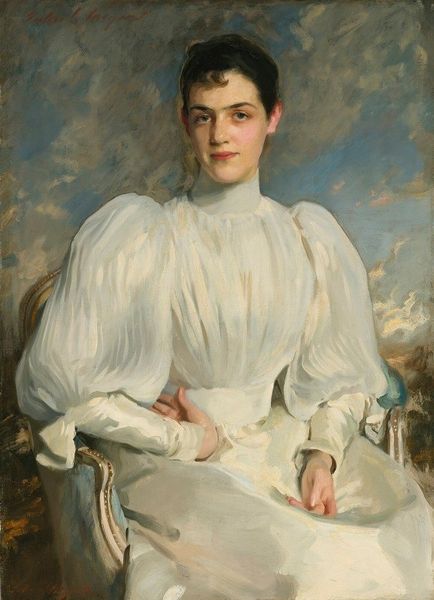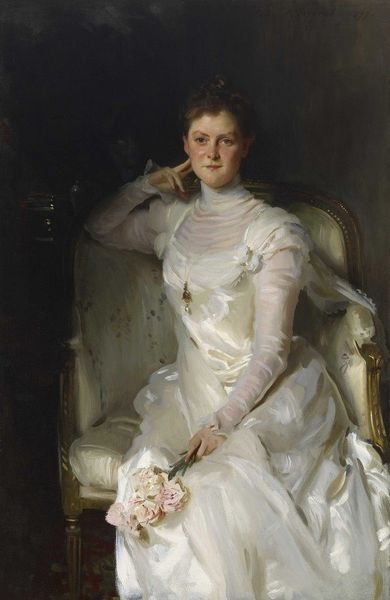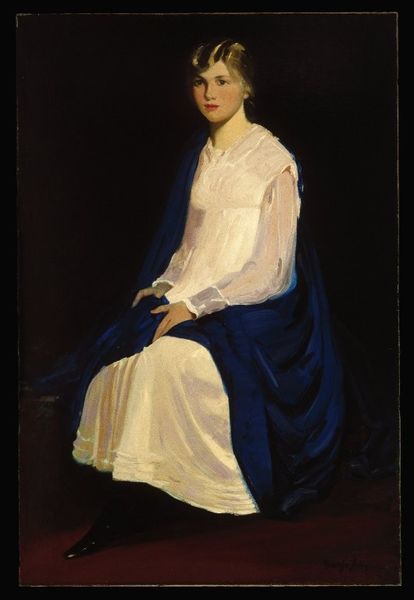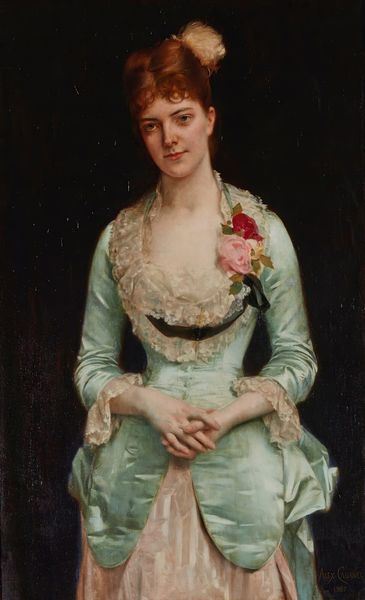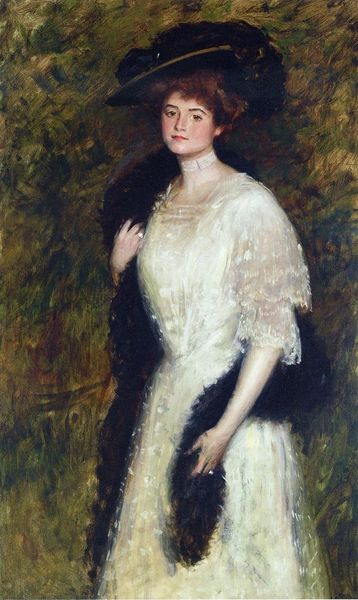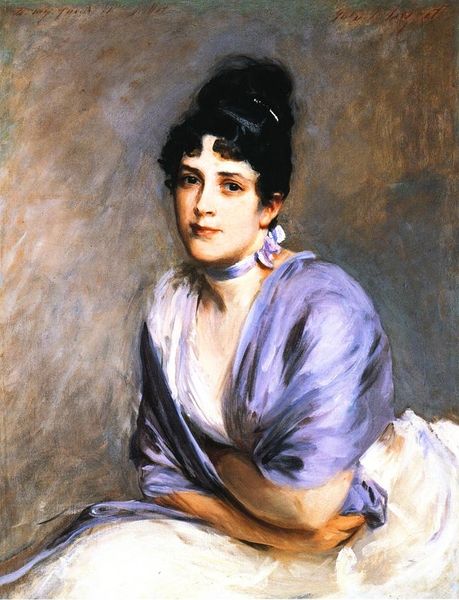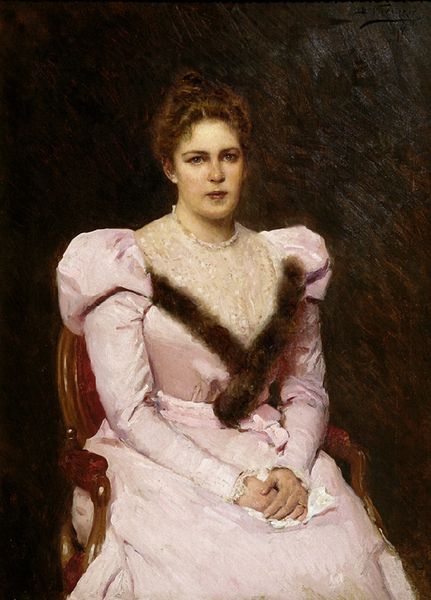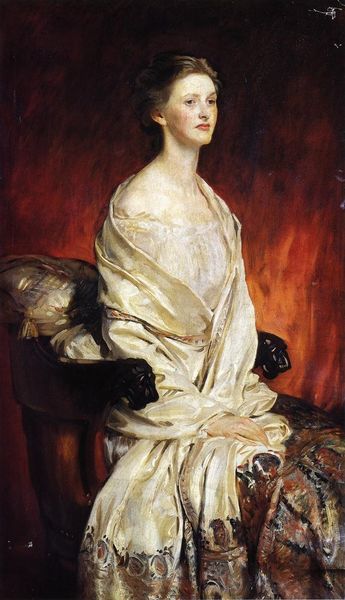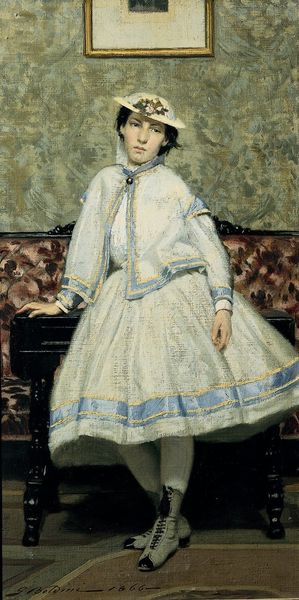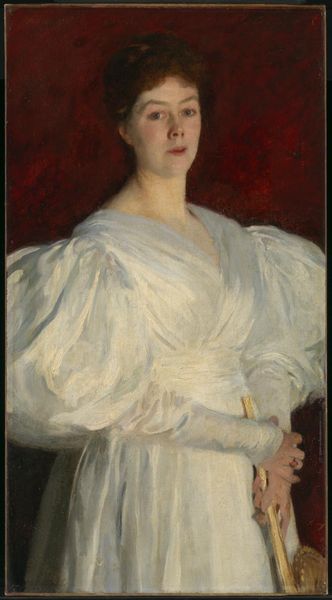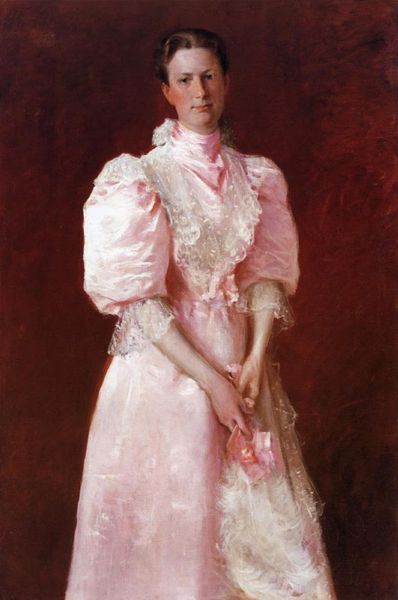
Dimensions: 111.8 x 81.3 cm
Copyright: Public domain
Curator: Standing before us is John Singer Sargent's portrait, "Mrs. Edmond Kelly," completed in 1889. The subject is captured in oil paint, embodying both elements of realism and the romantic style so prevalent at the time. Editor: It's quite striking, actually. The woman, draped in what looks like silk or satin, is almost ethereal against the dark, nearly undefined background. Her pose is casual, but the effect is almost confrontational, due to her somber look. Curator: Indeed. Sargent’s work often explores the performativity of gender and class. How might the subject’s clothing function as both an assertion and confinement of identity? And in what way could she be representative of broader themes of womanhood at the time? Editor: The dress speaks volumes about the labour, craft, and the economy surrounding its creation and its upkeep! Think of the sheer volume of material. The detail is amazing, you can almost feel the textures involved and consider what type of atelier created something of such status. It definitely signifies privilege and leisure of this sitter, removed from the practical realities for the working woman during this era. Curator: And the flowers she holds… Are they mere decoration or are they laden with meaning? Given Victorian society’s love for floral symbolism, are these blooms carefully chosen to convey her virtues or, perhaps, a hidden desire? Does their cultivated and manicured look speaks about nature’s subordination for one’s amusement and pleasure? Editor: Interesting point. Speaking about work... Look how casually yet firmly she holds them. And I wonder where those were sourced? Were they picked from the family's garden by hired hands, a daily labor she only appreciates as an end result? Curator: Precisely, how can the subject be framed within feminist and post-colonial contexts? Do artworks by Western male painters represent and further entrench gender and class differences in a way that makes us think about its problematic aspects? Editor: Well, examining the construction of the painting itself highlights the disparities of work in that period, when wealth accumulation often obscured the manual and industrial work on which those fortunes depended on. I hadn't fully considered its ramifications until now, with your broader focus. Curator: I believe delving into its context, both contemporary and historical, adds considerable complexity. Editor: Absolutely. It definitely adds new layers of complexity to an artwork with multiple histories.
Comments
No comments
Be the first to comment and join the conversation on the ultimate creative platform.
